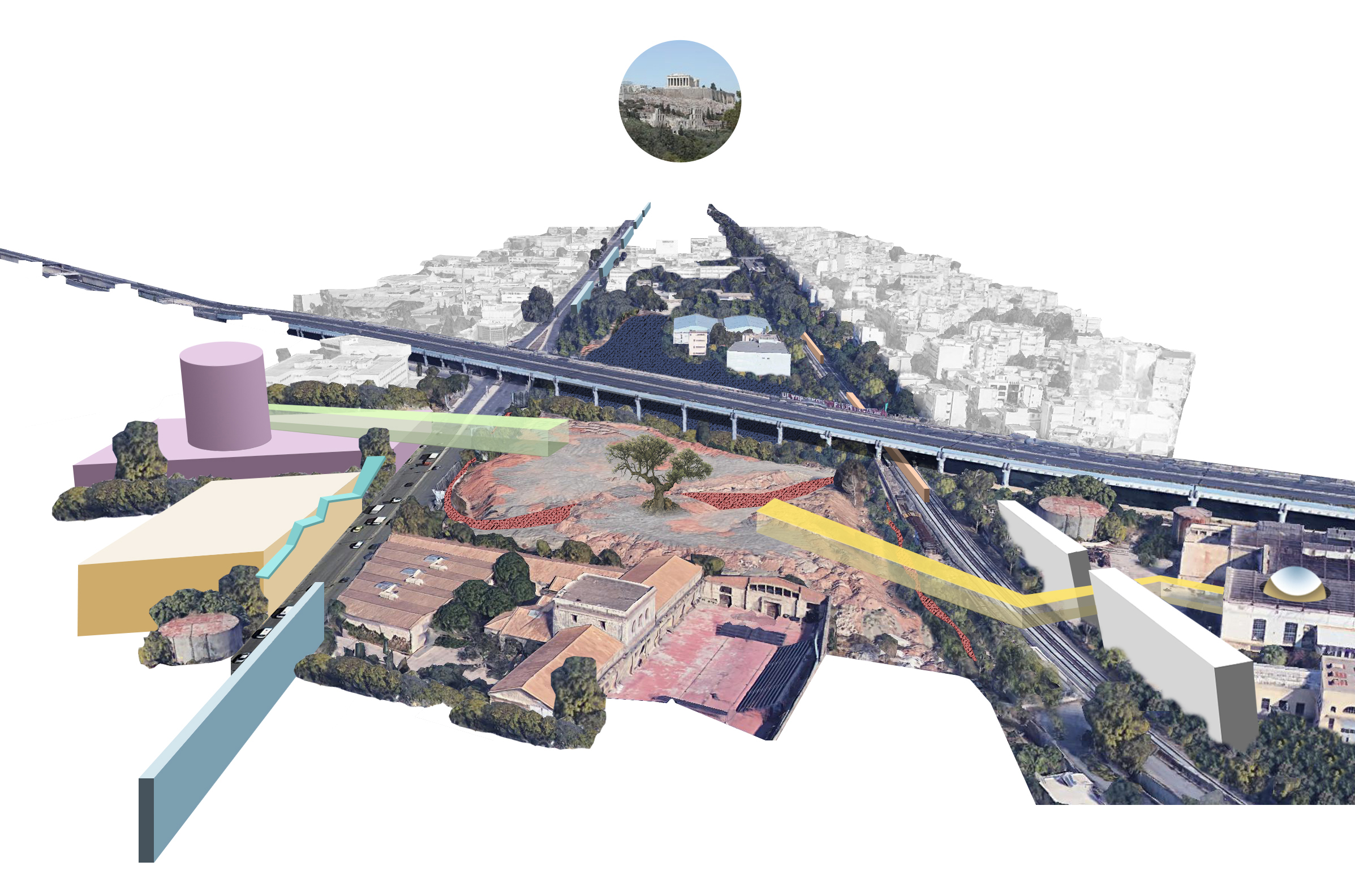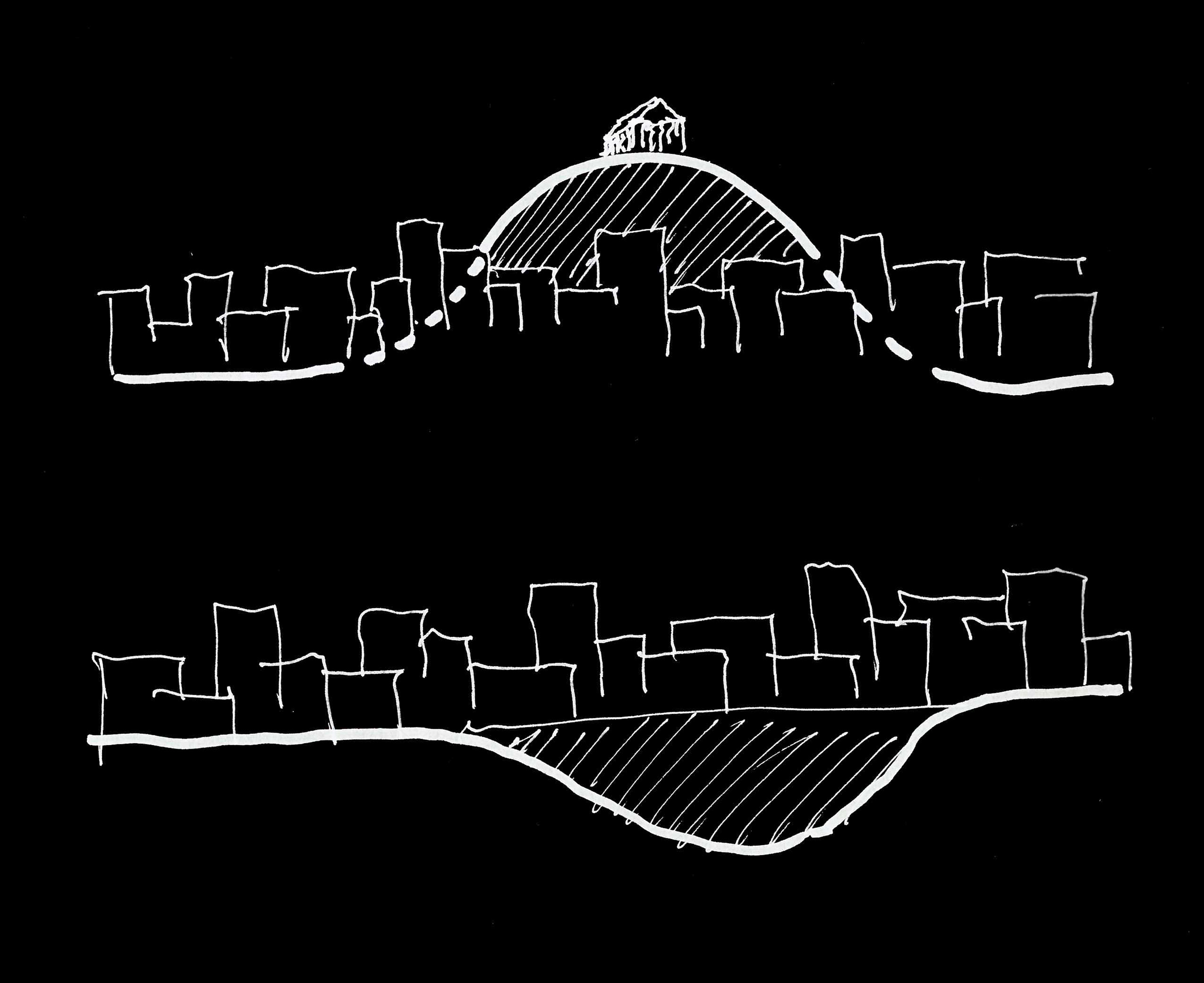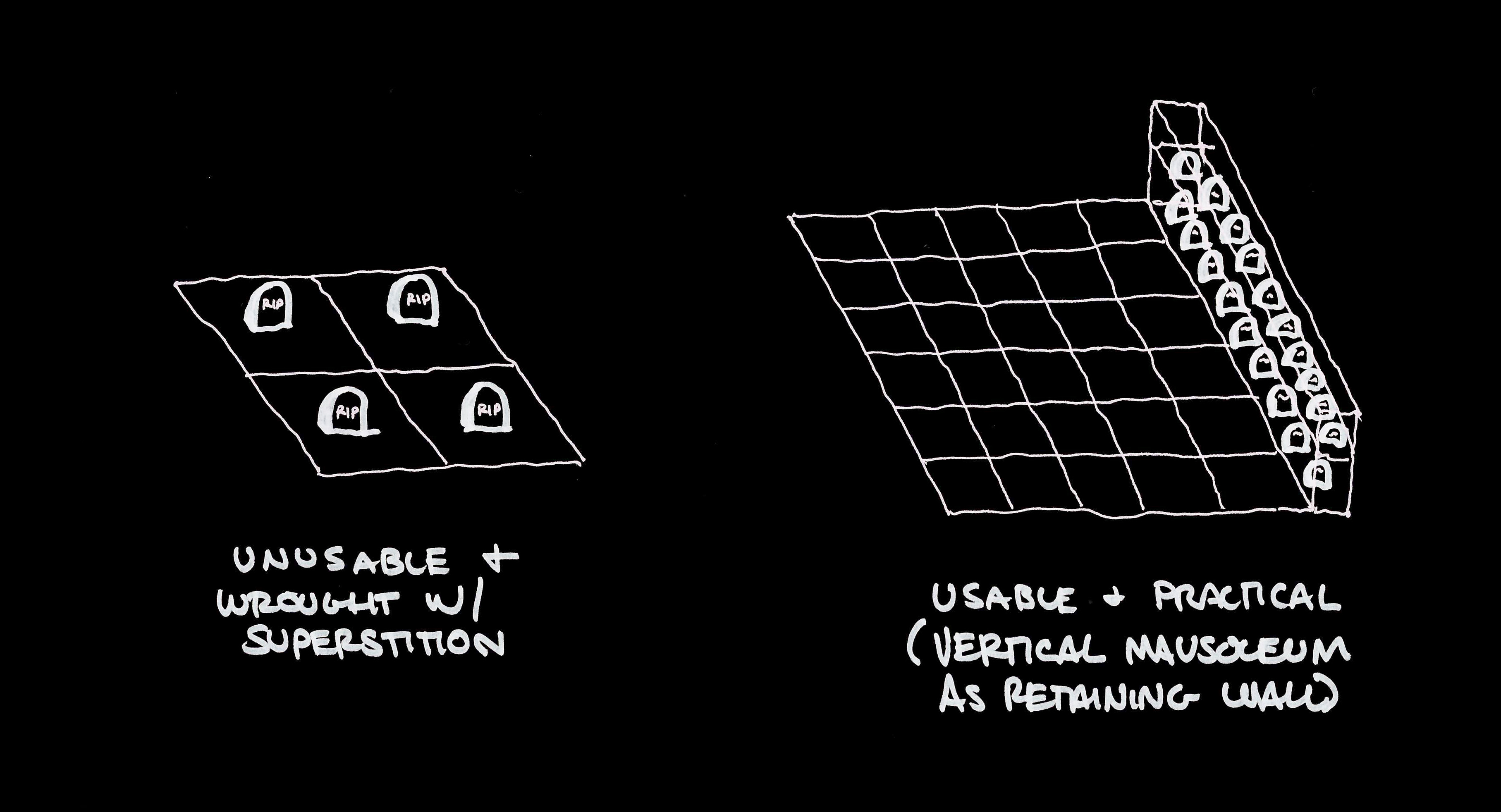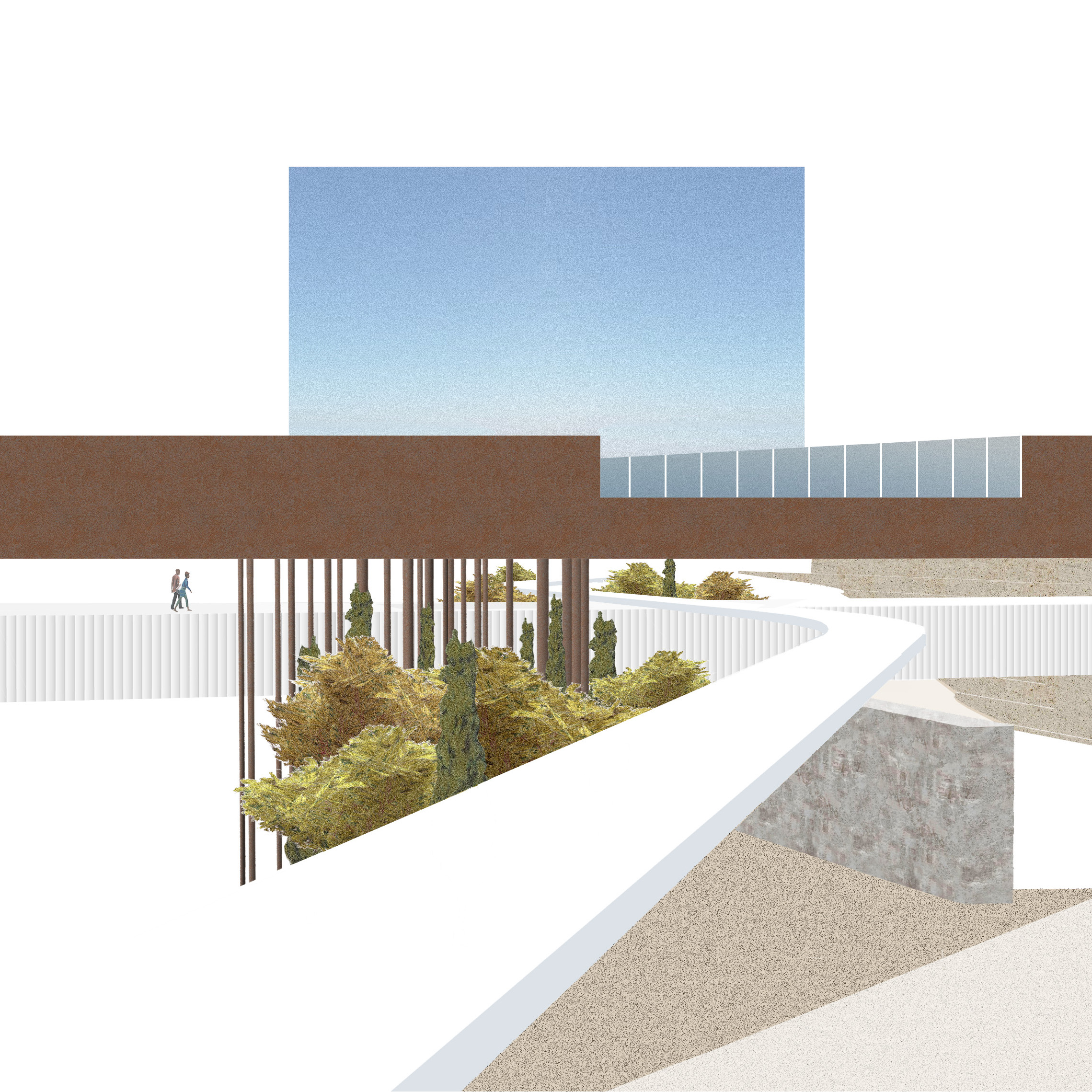urban epitaph

Athens has two dire needs, additional burial grounds & larger parks.
The city has run out of cemetery space — the deceased can occupy a plot for only three years before they're exhumed to accommodate another burial. With religious opposition to cremation and an aging population, Athenians need a new place for their dead to rest in peace.
Additionally, most of the city's open space is associated with ancient ruins, intended for commercial tourism rather than public use. Although absentee landlords have enabled the proliferation of guerrilla pocket parks, Athenians deserve larger green spaces, more sizable reprieves from the city's relentless density.


This project repurposes a site of ancient infrastructure to satisfy the contemporary city’s needs. In the countryside between ancient Athens and the port city of Piraeus, two parallel walls produced a fortified path between the Greek capital and its main shipping outlet.

Long since gone, these walls can be traced through modern Athens by following Piraeus Avenue and Metro Line 1, modern infrastructures that were built atop the old.

Currently, Athens is blanketed by a continuous crust of development, which is interrupted only by the acropolis and other ancient landforms that pierce through it — reference points in an otherwise homogeneous fabric. This project acts as an inverted reference point, deviating from the modern city through depth rather than height.

Instead of typical cemetery space, two vertical mausoleums follow the footprints of the long walls and frame a large park in between.

The two mausoleums act as retaining walls, allowing the park to sink as much as thirty feet below street level. This sectional move reveals the scale of the historic walls while providing a cool, shaded, and lush public space, rather than another arid peak.

The area between the long walls is currently underutilized
— an opportune place to clear buildings and create open space. However, despite its disuse, the site is within a dense city and requires multiple functions to justify openness and stimulate consistent use.

Three bridge-buildings restitch the city fabric across the sunken park, using urban circulation to promote additional uses on the site.

While they all enable cross-park connection, each building’s relationship to the land is unique, creating a variety of spatial conditions and movements relative to the park.




The bridge-buildings provide an assortment of tenant spaces, projecting everyday life onto the park and mausoleums below.

Fleeting occupations, such as passing through on the metro, exist alongside the permanent occupation of burial. The timeless elements of park and
mausoleum
mediate between quicker public uses and the ancient history of the long walls.
